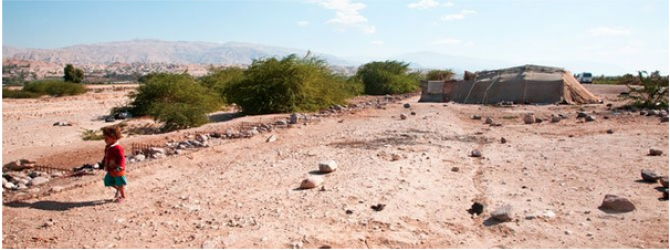-
Part Two of a Three Part Retrospective on the Arab ...
Part Two of a Three Part Retrospective on the Arab Spring: Regime Change in Yemen and Libya: From Weak State to Violence

Four countries experienced regime change during the Arab uprisings: Egypt, Tunisia, Yemen and Libya. While all four had struggled under autocrats for decades, from the outset, it was clear that the transitions would develop quite differently in Yemen and Libya than in Egypt and Tunisia. Egypt and Tunisia were more united by nationalism and better equipped for a transition in power. Even before the uprisings, Libya and Yemen were unstable, and for these weak states, change in leadership has been followed by a descent into violence.
Libya
Libya's experience in the Arab Spring began with protests against the 42-year rule of Colonel Muammar Qaddafi in Benghazi in February 2011. When security forces fired upon protesters, demonstrations ignited throughout the country. By March, the international community decided to intervene: UN Security Council Resolution 1973 authorised member states “to take all necessary measures… to protect civilians and civilian populated areas under threat of attack” and enforce a no-fly zone in Libya. With NATO assistance, rebel forces gained Tripoli in August. A month later, the UN recognized the rebels' political organisation, the National Transitional Council (NTC), as Libya’s interim government. Qaddafi was captured and killed at the end of October, but his decades of corrupt and divisive rule left a destructive legacy.
The election law drafted by the NTC drew immediate international criticism for its restrictive voting limitations. But any election law may have failed given the massive challenges facing the newly elected parliament when they came to power in August 2012. Even Qaddafi had struggled to control Libya's rogue eastern territory; without him, warring tribal militias challenged any semblance of Libyan nationalism.
International awareness of Libyan violence peaked with the attack on the US consulate in Benghazi on 11 September 2012, but the infighting has continued. Libya's fifth prime minister since Qaddafi's fall was chosen in May 2014; his premiership met immediate opposition. A militia organisation called Libya Dawn seized Libya's capital Tripoli in August 2014 and backed a separate General National Congress as government. The internationally recognized parliament and prime minister were forced to relocate to Tobruk in eastern Libya, leaving Libya to operate under two separate governments, at war over the country's governance and resources. News of Daesh, the so-called Islamic State, encroaching throughout the country has stoked further concern for Libya’s future. UN efforts to reconcile the fighting factions achieved a much lauded peace deal in July but unfortunately failed to include the Tripoli-based parliament, a rather significant omission.
Yemen
Hopes for Yemen, one of the poorest countries in the region, to transform itself during the Arab Spring were never high. Not only do its people suffer from chronic water and food shortages, the nation offers nothing substantial in the form of social services; instead a rentier economy maintained security through monetary handouts from Yemen’s small oil reserves to tribal leaders and political elites. These handouts also helped preserve unity throughout Yemen's divided populace, the Yemen Arab Republic and the People' Democratic Republic of Yemen (North and South Yemen, respectively), were only united in 1990, and a southern separatist movement continued to threaten Yemen's stability.
Protests calling for an end to President Ali Abdullah Saleh's 33 years in office started in January 2011. Saleh's use of economic incentives to quell protesters proved ineffective this time around, and in March, pro-regime snipers turned on the non-violent protesters. This incident triggered the escalation of Yemen's uprising into violence. Though he managed to maintain power for months, Saleh eventually transferred power to his vice president Abd Mansour Hadi who was voted into the presidency in February 2012.
Under Hadi, reforms were passed to decentralize, and thus, democratize power by turning Yemen into a federal system of six states. This reform produced little, if any, positive effect, and in September 2014, the fragile government crumpled to northern Yemen's Houthi rebels who seized the capital in response to fuel hikes. President Hadi, initially resigned, subsequently rescinded his resignation and declared a new capital in Aden from where he has launched a counter-offensive, with considerable external support. Yemen's violence contains the added element of sectarianism: Yemen's Houthis, who have been leading the crackdown against al-Qaeda, are Shia and linked to Iran. Thus, Sunni Gulf powers, already perturbed by Iran’s rising power, watched the neighbouring developments with trepidation. In March 2015, concern transformed into active involvement; Saudi Arabia has led an intermittent Sunni nation bombing campaign to drive back the Houthis, internationalising the civil conflict. In August, Emirati ground troops joined the effort. As each escalation fuels regional Sunni-Shia tensions further, al-Qaeda is emerging as the real beneficiary, sharing an enemy with the powerful foreign coalition allowing it to expand and consolidate its hold.
Future Outlook
Despite their geographic disparity, Yemen and Libya share much in common, most critically, the two nations are weak states. Each subsisted under strongman dictatorships with oil resources; neither had developed functioning governments or a robust sense of nationalism. The obstacles to building functioning states, let alone democracies, were truly daunting. Although neither nation has a particularly positive outlook for the medium-term future, Libya lacks the religious heterogeneity that left Yemen ripe for sectarian exploitation. Thus, even with Daesh’s presence on Libyan soil, the African nation may be spared the brunt of the region’s spreading sectarian violence.

